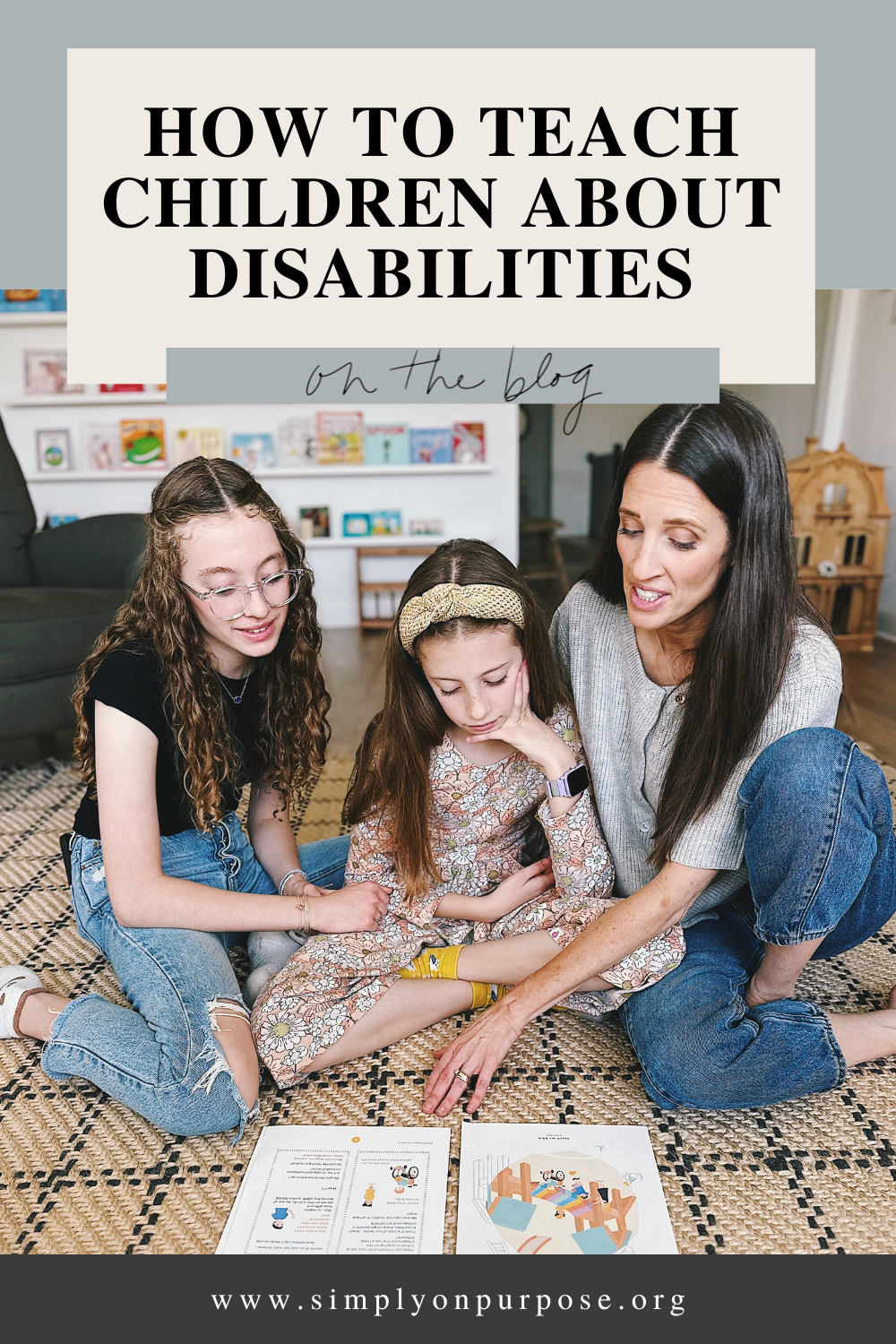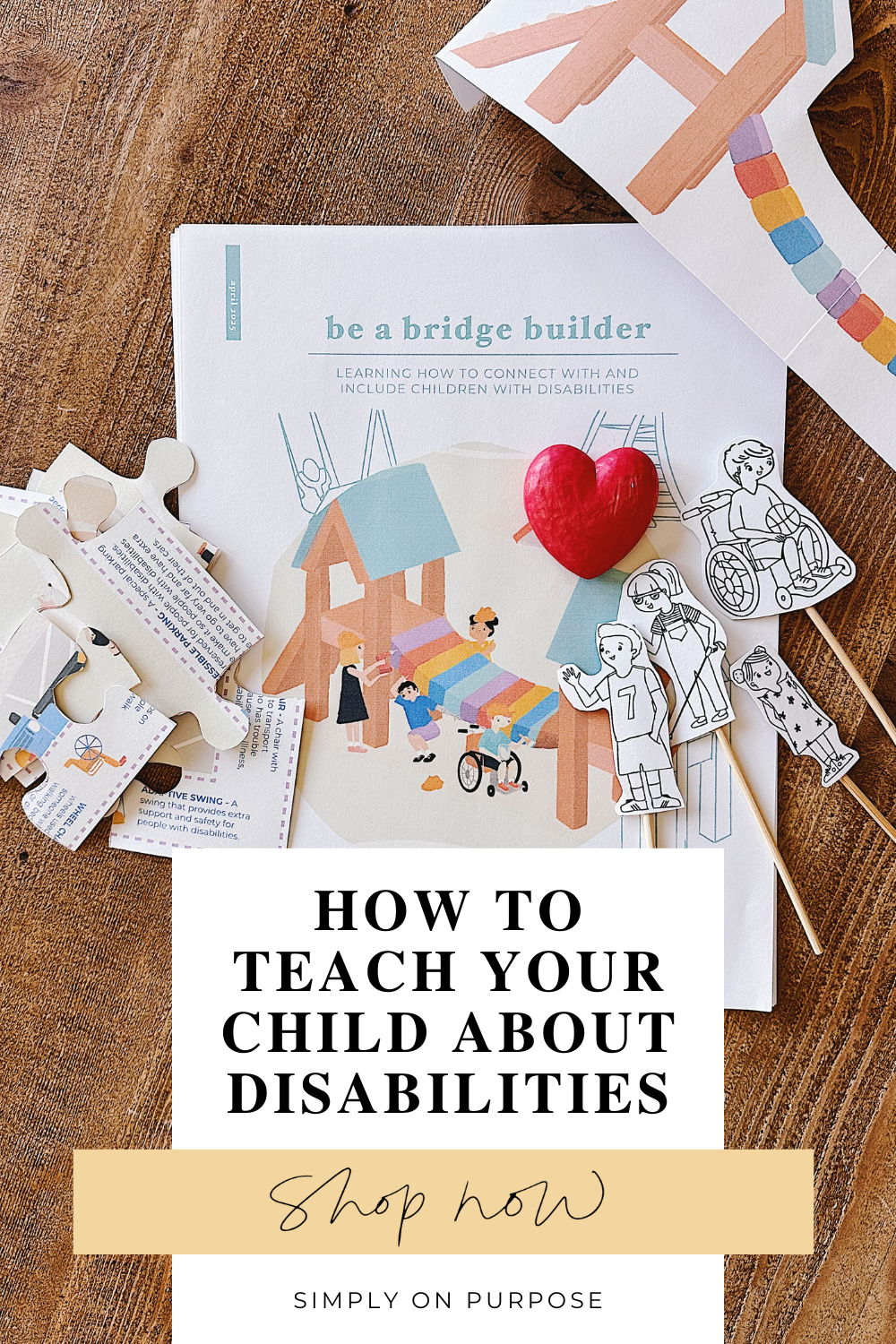Talking to kids about disabilities can feel overwhelming, but it doesn’t have to be. The key is to help your child see past differences and focus on what we all have in common. This approach not only teaches understanding and empathy, but also lays the groundwork for real, meaningful connections.
Here’s the one tip that can make a big difference:
Teach your child to look for what they have in common.
Just as with anyone new they meet, children can build new friendships by focusing on shared interests, hobbies, or experiences. After all, a person’s disability is just one part of who they are. Oftentimes, it’s not even the coolest thing about them!
1. Start the Conversation
Children are naturally curious, so it’s important to create a safe space for questions and discussions. Begin by sharing this simple idea: “We are all the same on the inside. Everyone has feelings, dreams, and things they love to do.”
You can also explain that while some people may look or move differently, those differences don’t define who they are. For example, you might say, “You love drawing and playing soccer, right? Well, your classmate who uses a wheelchair might love reading books or singing songs. Isn’t it fun to learn about what other people like?”
2. Ask Questions to Connect
Encourage your child to find common ground by asking thoughtful questions. Here are a few examples you can share:
- What’s your favorite thing to do after school?
- Do you have any pets? What are their names?
- What’s your favorite movie or TV show?
- What’s the best game you’ve ever played?
- Do you like music? What’s your favorite song?
These questions help your child focus on a person’s interests rather than their differences. And by asking with genuine curiosity, your child shows they’re interested in who the person truly is.
3. Model How To Connect in Everyday Moments
Children learn a lot from watching their parents. If you have the opportunity to meet someone with a disability, take the lead by showing kindness and interest. For example, you might say, “Hi, I’m Sarah. What’s your name? I noticed your amazing drawing. Do you like art?” This simple act demonstrates how easy it is to connect with someone based on shared interests.
You can also point out commonalities during everyday situations. For example: “Did you see that boy at the park wearing a Spider-Man shirt? You love Spider-Man too! Maybe you could say hi and ask about his favorite superhero.”
4. Teach Empathy and Perspective
Remind your child that everyone has something unique to offer, and differences make the world more interesting. Encourage them to think beyond appearances and abilities. For instance, you could say, “Imagine if people only focused on your curly hair or your glasses. They’d miss out on all the other amazing things about you!”
Helping your child understand that a disability is just one part of a person encourages them to see the whole individual. This perspective builds empathy and helps them connect on a deeper level.
“Be a Bridge Builder” Resource
If you’re looking for a printable lesson to help your children practice these types of interactions, check out my digital download, “Be a Bridge Builder: Learning How to Connect With and Include Children with Disabilities.”
Through a lesson, activity, and role plays, your family will learn:
- How to interact with people who have disabilities: the right words to say, and conversations you can start
- That we are all the same on the inside, no matter what we look like on the outside
- The names of tools used by people with disabilities
- How to have greater empathy for those with disabilities
We want to teach children that we are more the SAME than we are different. And that children have a great capacity to be bridge builders! Your family will learn so much together as you discuss this topic.
If you would like more resources on teaching your child how to strengthen friendships in different settings, you might like these resources:
- Let’s Be Friends: Learning How to Find and Be the Best Kind of Friend – learning to make new friends
- Let’s Build a Friendship: Learning How to Become Better Buddies at Home – strengthening bonds with siblings
- Encouraging Friendships Between Siblings


